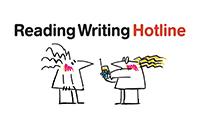Simplify forms and documents.
Plain English assists everyone in the workplace. Review payslips, timesheets and other key documents to make them easier to understand and fill out. Call the Hotline for organisations that can help you with this.
Everyone can benefit from literacy training.
Literacy and numeracy training is for anyone who wants to communicate more clearly and do their job more efficiently. A respectful, collaborative approach with employees that focuses on the value of the training will improve uptake. Naming your training is also important: Workplace Communication or New Technologies can be less threatening than Literacy and Numeracy Training.
Make the most of new technology.
Provide support for new technology to minimise stress and resistance. Show employees how it will help them do their job, and provide the support they need in the initial stages. Literacy and numeracy upskilling can make a critical difference at this time.
Discuss reading and writing skills with supervisors.
Remember that people can feel embarrassed about literacy issues. It is a sensitive topic and needs to be treated carefully. Literacy, numeracy and digital literacy are foundation skills; keep them in mind and regularly canvas the need for support and training with supervisors and managers.
Orienting new employees
Introducing important forms and processes during initial orientation helps employees understand that managers and team leaders are there to assist, and minimise errors. Don’t assume all employees can read important documents – offer these in an alternate format.


